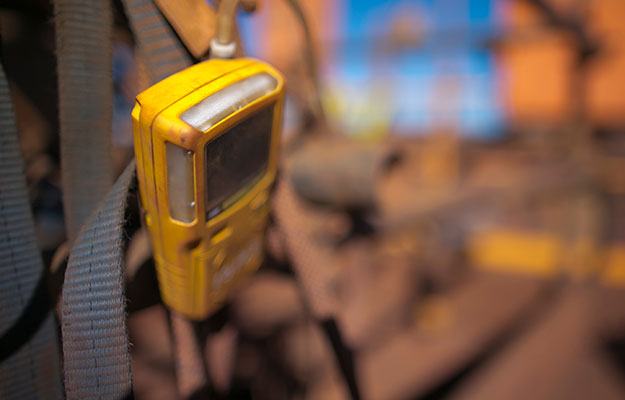
Gas sensors are available in a variety of technologies, each having distinct advantages and limitations for their individual applications. Some of the more common types are electrochemical, catalytic bead, infrared and metal oxide. CNIguard’s Ian Courtney examines the relative merits of the different gas sensors available.
Electrochemical sensors contain electrodes wetted with an aqueous or gel electrolyte and measure specific toxic gases in parts per million (ppm) over a wide temperature range. A PTFE (polytetrafluoroethylene) membrane is normally positioned over the gas entry hole to prevent water or oils from entering the cell.

The size of the hole defines sensitivity and resolution. These sensor types can suffer from cross interference with other similar gases of no interest. Repeated temperature extremes can result in evaporation of the electrolyte and potential shifts in the baseline reading and slowdown of response. Humidity has the most significant effect on sensor life. Above 60% relative humidity, the electrolyte absorbs water causing dilution, reducing life expectancy. Unfortunately, at their end of life, these sensors produce zero current output in the presence of gas, as they would if no gas was present. Overall, electrochemical sensors typically have an operational life of between 2 and 5 years.
Catalytic bead or pellistor sensors are constructed of two resistive thin wire elements, one a detector and the other a reference. As the sensing element meets combustible gas, the temperature of the bead increases and the resistance increases accordingly. The difference in the resistance between the sensing and reference elements is the signal representing the concentration of gas. These sensor types measure combustible gases such as methane, butane and propane from 0-100% lower explosive limit (LEL) or as a percentage of volume. They are generally very reliable but can be contaminated by household cleaning products or silicone based compounds, affecting sensitivity or causing permanent damage. Changes in the thermal conductivity of the atmosphere, such as the change caused by relative humidity, will cause the resistance of the elements to change at different rates creating a signal from the sensor that appears as zero drift. This drift may be negative or positive and is dependent on the resistance of one wire element relative to the other. Although the drift may represent a small percentage of the LEL the most common way to compensate for the drift in the sensor is to allow the elements to stabilize in the environment in which they are deployed and zero the sensor in that environment. This factor is important to understand when sensors are power cycled to reduce current consumption and a stabilization period is required after every ‘on’ cycle. Very high gas concentration can also impede the sensor’s ability to measure the gas. Pellistor sensors can have a life expectancy of over 5 years.
Non-dispersive Infrared (NDIR) sensors are normally used to measure very specific target hydrocarbon vapours over wide temperature ranges and in humid conditions but can be affected where the environment contains hydrogen or acetylene. A detector measures the quantity of infrared light of the specific wavelength that is absorbed by the surrounding air. This measurement is then used to calculate the concentration of a specific gas. The major advantages are the low life-cycle cost with precise and stable operation over humidity and temperature fluctuations. The lifetime of NDIR sensors is very long (10 years plus), mostly due to the fact that these sensors do not suffer burnout or deterioration upon exposure to gases. Power consumption can, however, be an issue in battery-operated devices.
Metal oxide (MOS) sensors are solid-state devices that can detect combustible and toxic gases, especially in hazardous atmospheres. The metal oxide surface is usually a thin film of a transition or heavy metal that undergoes either oxidation or reduction when a gas comes into contact with it. The absorption or desorption of the gas on the metal oxide changes either the conductivity or resistivity from a known baseline value. This change can be measured electronically. The life expectancy of MOS sensors can be greater than 10 years, however, they generally have high power requirements due to the need for a heating element and performance may suffer due to changes in temperature and humidity.
At CNIguard, we select gas sensor types for specific customer applications, taking into account performance, power requirements, operating environments and life expectancy.
Find out more about our Gas Technology Institute approved GasMarshal product here.
USA Headquarters
8601 Dunwoody Place
Suite 303
Sandy Springs
GA 30350
United States
T: +1-212-764-0100
Edinburgh Innovation Center
14 S Charlotte Street
Edinburgh EH2 4AX
United Kingdom





 Jason Wilson
Jason Wilson